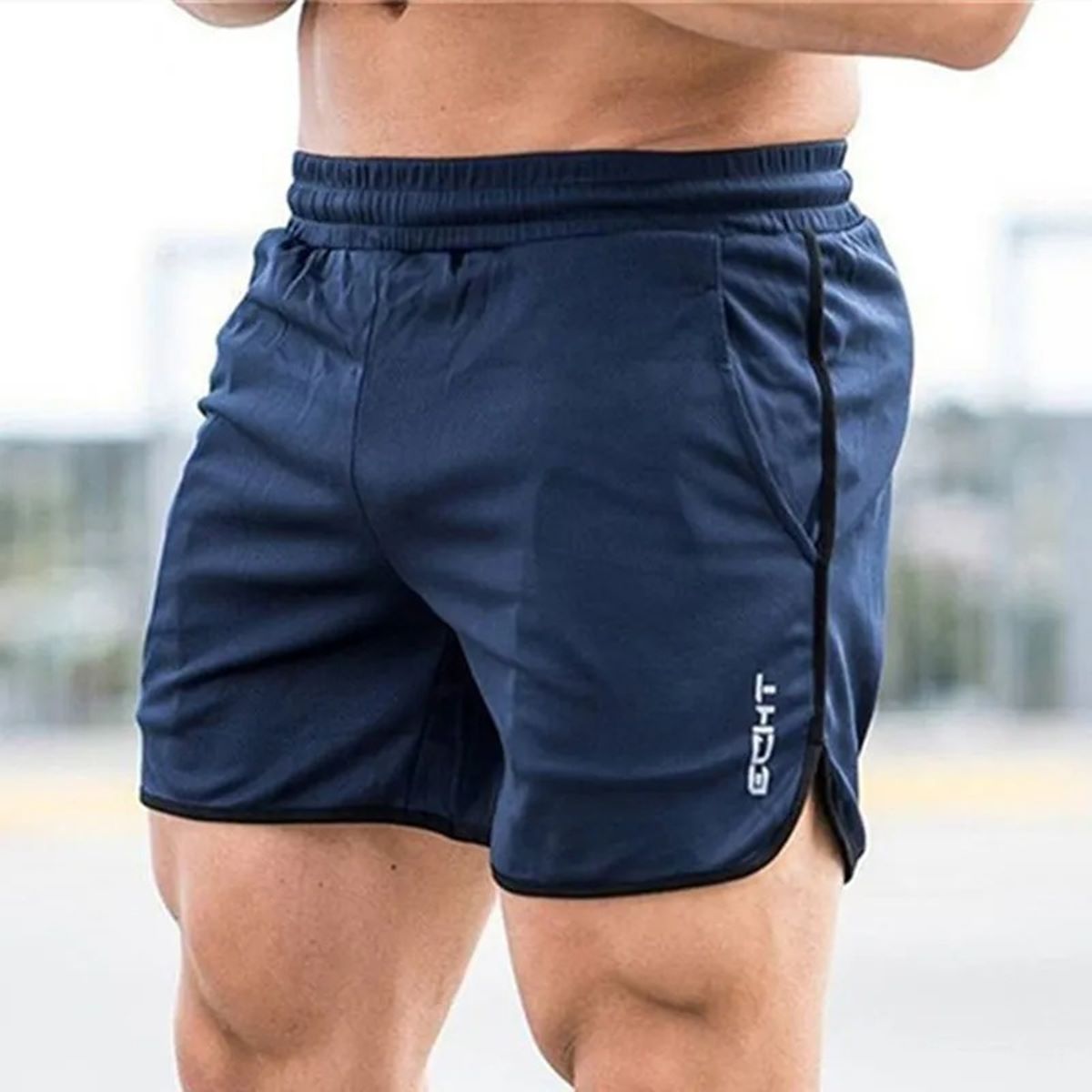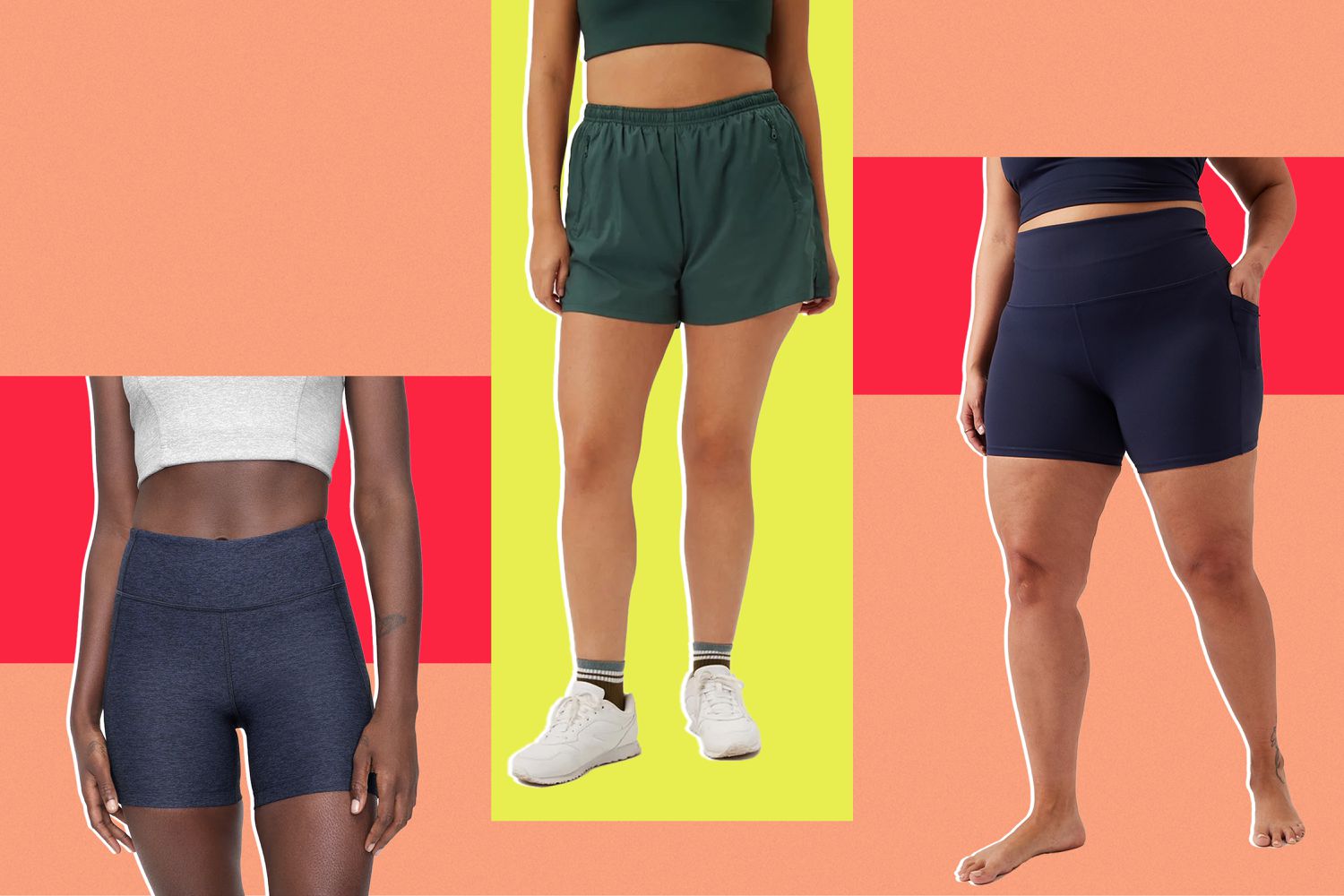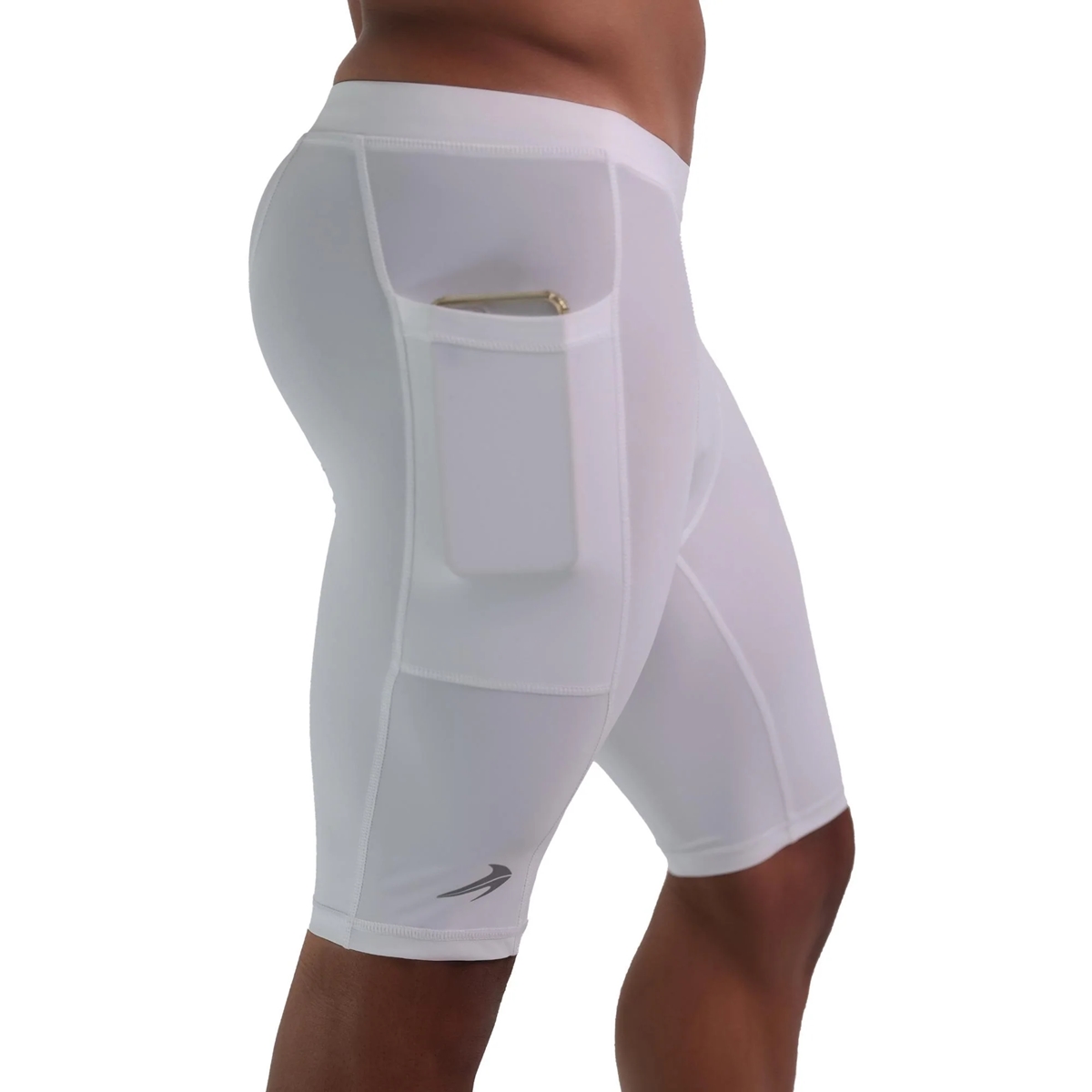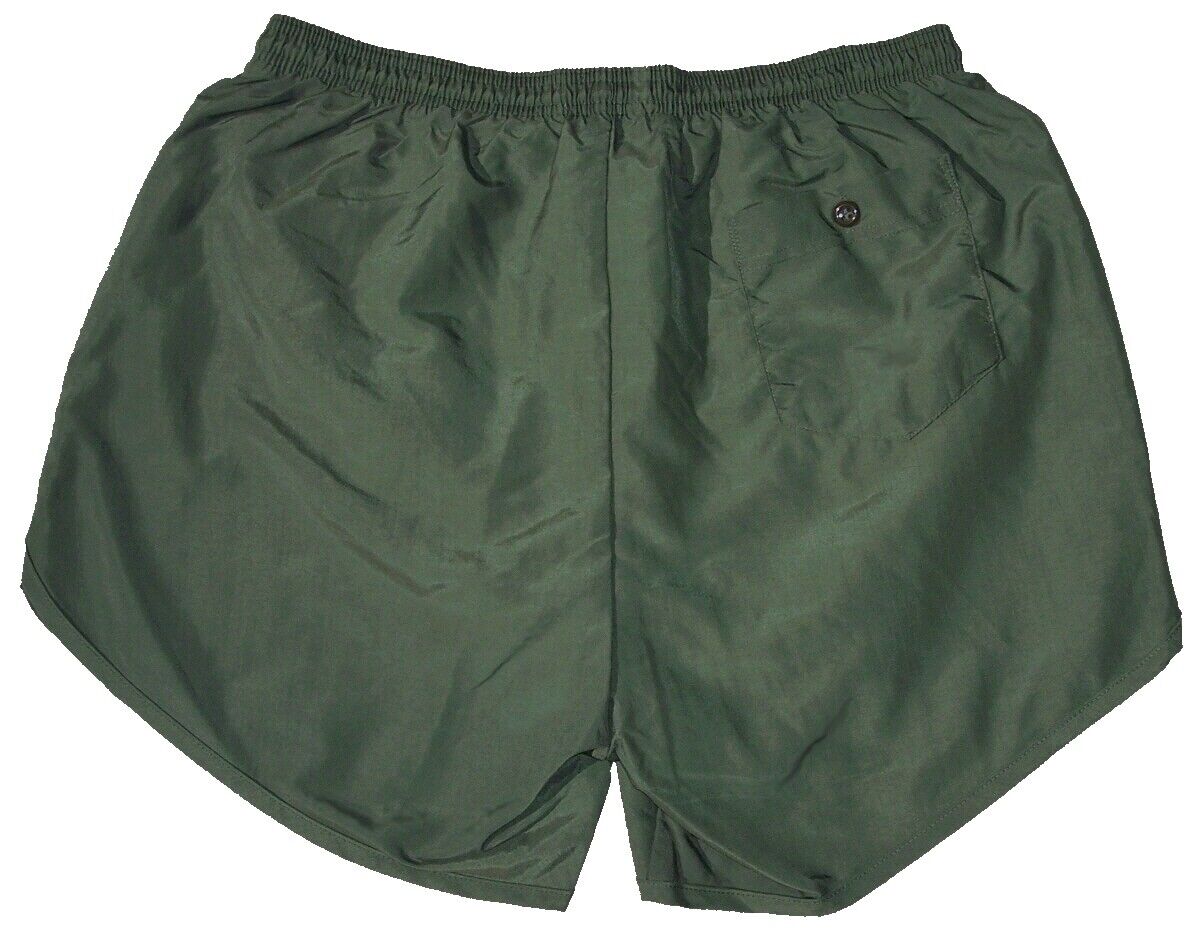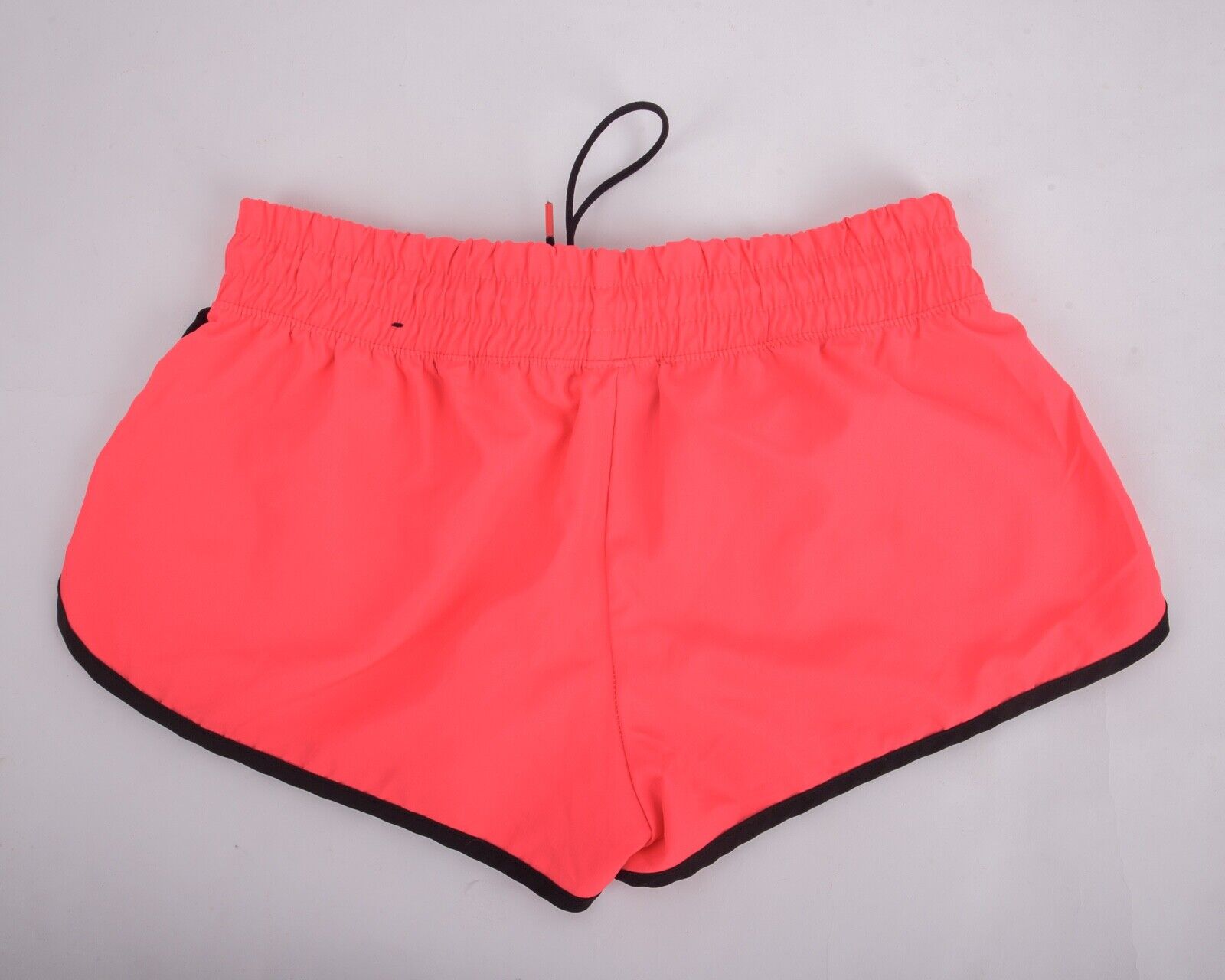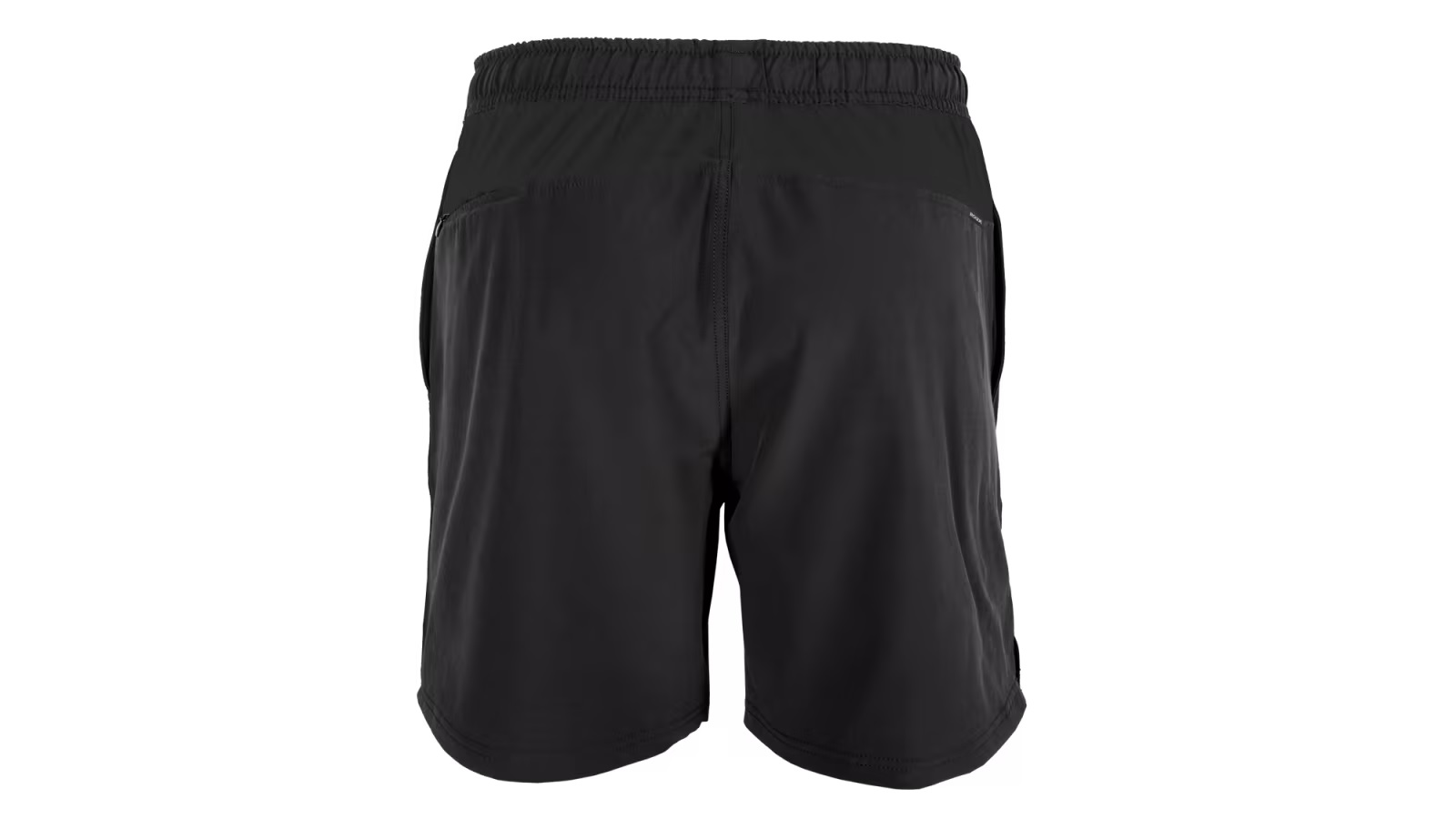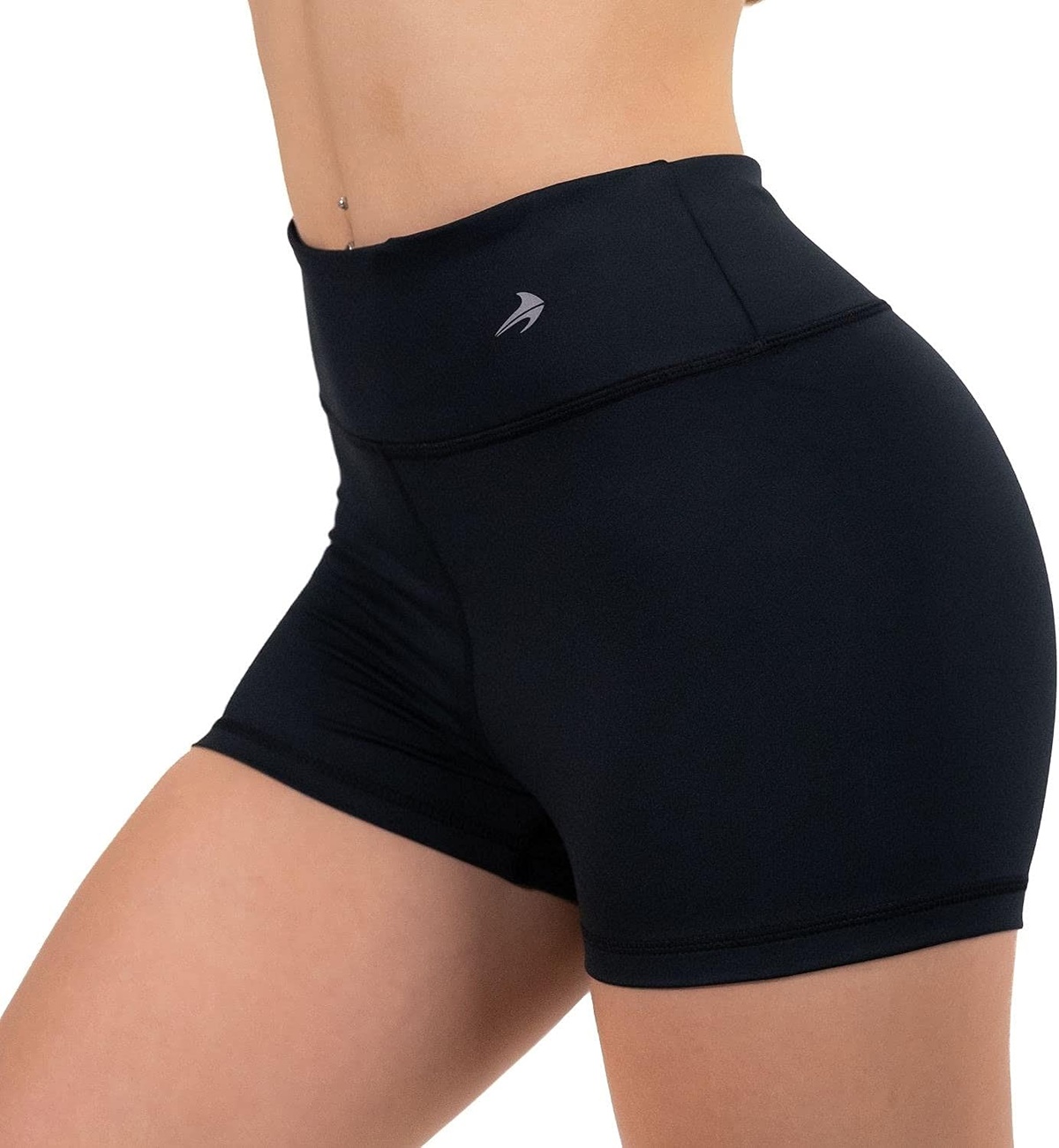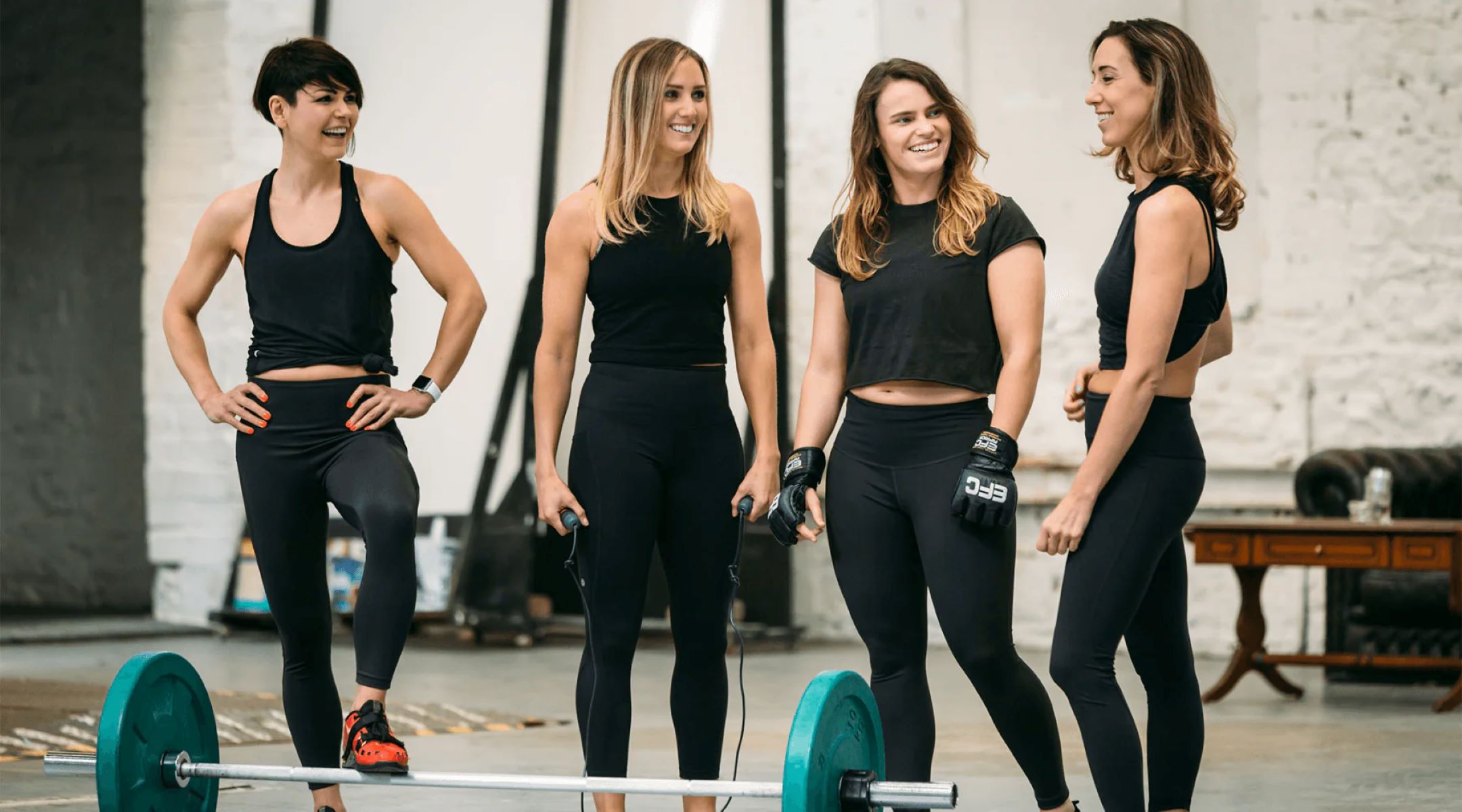

Featured
What To Wear To Workout
Modified: May 22, 2024
Get ready to sweat it out in style! Check out our featured workout wear collection for fashionable and functional options that will keep you motivated and comfortable during your fitness routine.
Introduction
Welcome to the world of fitness! Whether you are a seasoned athlete or just starting your fitness journey, having the right workout attire is crucial for a successful and comfortable workout. Just like with any activity, what you wear can greatly impact your performance and overall experience. Proper workout attire not only enhances your performance but also provides protection and comfort, allowing you to focus on reaching your fitness goals.
From lightweight tops to supportive sports bras and moisture-wicking leggings to cushioned shoes, there are countless options available to suit your specific workout needs. But with so many choices, it can be overwhelming to know what to wear. That’s where we come in. In this article, we will guide you through the world of workout attire and help you make informed decisions about what to wear during your workouts.
Choosing the right workout clothing goes beyond just looking stylish at the gym. It is about functionality, comfort, and ensuring that your attire allows your body to move freely. Not only will the right workout attire boost your confidence, but it will also provide the necessary support and protection for your body during exercise. So, let’s dive in and explore the factors to consider when choosing the perfect workout attire!
Importance of Proper Workout Attire
Proper workout attire plays a vital role in ensuring a safe and effective exercise routine. Here are some key reasons why it’s important to invest in the right workout clothes:
- Performance Enhancement: The right workout attire can improve your performance by allowing for optimal movement and flexibility. Clothing that is specifically designed for exercise activities, such as moisture-wicking fabrics, can help regulate body temperature and keep you comfortable throughout your workout.
- Support and Protection: Certain workouts, such as running or weightlifting, put stress on specific parts of the body. Having proper support in the form of sports bras, compression gear, or specialized footwear can help reduce the risk of injuries and provide added stability.
- Comfort: No one wants to be distracted by uncomfortable clothing during a workout. Choosing attire that fits well and is made from breathable materials can prevent chafing, irritation, and overall discomfort, allowing you to focus on your form and performance.
- Confidence Boost: Feeling good about what you’re wearing can have a positive impact on your mindset and motivation. When you look and feel good in your workout clothes, you’re more likely to have a productive and enjoyable workout session.
- Hygiene: Sweating is a natural part of exercise, and wearing the right workout clothes can help manage moisture and prevent the buildup of bacteria and odor. Fabrics with moisture-wicking properties can draw sweat away from your body, keeping you feeling fresh and clean.
By investing in proper workout attire, you’re not only prioritizing your comfort and safety, but you’re also setting yourself up for success in reaching your fitness goals. Now that we understand the importance of workout attire, let’s explore the factors to consider when choosing the perfect workout clothing.
Factors to Consider When Choosing Workout Clothing
When it comes to choosing the right workout clothing, there are several factors to keep in mind. Here are some key considerations:
- Activity Type: The type of workout or activity you engage in will dictate the specific clothing you need. For example, if you’re doing high-intensity workouts like running or HIIT, you’ll want lightweight, moisture-wicking fabrics to keep you cool. For activities like yoga or pilates, clothing with stretch and flexibility is essential to allow for a full range of motion.
- Fit: Proper fit is crucial for workout clothing. Clothes that are too tight can restrict movement and cause discomfort, while clothes that are too loose can get in the way and hinder your performance. Look for clothing that is snug but allows for comfortable movement.
- Fabric: Choosing the right fabric is essential for breathability, moisture-wicking, and overall comfort. Opt for materials like nylon, polyester, or spandex that have moisture-wicking properties to keep you dry and comfortable during your workouts.
- Climate: Consider the climate and weather conditions you’ll be working out in. If you’re exercising in hot and humid conditions, opt for lightweight, breathable fabrics that allow for airflow. In colder temperatures, layering is key to regulate body temperature and stay warm.
- Durability: Look for workout clothing that is made from durable materials and has reinforced stitching to withstand the rigors of your workouts. This will ensure that your clothing lasts longer, saving you money in the long run.
- Comfort: Comfort is paramount when it comes to workout attire. Avoid clothing with scratchy seams or tags that can cause irritation. Try on different styles and brands to find what feels most comfortable for you.
- Personal Style: While functionality should be the primary consideration, your personal style should not be overlooked. Choose workout clothing that makes you feel confident and reflects your unique personality.
By considering these factors, you can choose workout clothing that not only meets your specific needs but also enhances your overall workout experience. In the next sections, we will explore different types of workout tops, bottoms, and shoes to help you make informed choices.
Types of Workout Tops
When it comes to workout tops, there are various options available to cater to different preferences and activities. Here are some common types of workout tops:
- Tank Tops: Tank tops are a popular choice for workouts, especially in hot weather or for activities that require a wider range of upper body movement. They provide freedom of movement for your arms and shoulders and often feature moisture-wicking fabrics to keep you cool and dry.
- T-Shirts: T-shirts are a versatile option that can be used for a variety of workout activities. Look for t-shirts made from lightweight, breathable fabrics, such as cotton or polyester blends, to ensure comfort during exercise.
- Long-Sleeve Shirts: If you’re working out in cooler temperatures or prefer more coverage for your arms, long-sleeve shirts are a great option. Look for ones with moisture-wicking and quick-drying properties to keep you comfortable during your workouts.
- Hoodies: Hoodies are perfect for outdoor workouts in colder weather. They provide warmth and can be easily layered with other clothing. Look for hoodies made from breathable fabrics to prevent overheating.
- Compression Tops: Compression tops are snug-fitting tops that provide added support and promote blood flow during workouts. They are commonly used for high-intensity activities and can help reduce muscle fatigue and soreness.
- Sports Bras: Sports bras are a must-have for women engaging in physical activity. They provide support and minimize breast movement during workouts, reducing discomfort and potential damage to breast tissue. Look for sports bras that offer the right level of support for your activity level.
When choosing a workout top, consider the type of activity, climate, and your personal preferences. Opt for fabrics that allow for ease of movement, breathability, and moisture-wicking properties to keep you comfortable throughout your workout. Don’t forget to consider the fit and support provided by sports bras for optimum comfort and performance. Now let’s explore different types of workout bottoms!
Types of Workout Bottoms
When it comes to workout bottoms, having the right type of pants or shorts is essential for a comfortable and successful workout. Here are several types of workout bottoms to consider:
- Leggings: Leggings are a popular choice for both men and women across various fitness activities. They provide a snug and supportive fit, allowing for a wide range of movement. Look for leggings made from moisture-wicking and stretchable fabrics to keep you comfortable during intense workouts.
- Shorts: Shorts are a preferred option for activities that require more freedom of movement for the legs, such as running or HIIT workouts. Choose lightweight and breathable shorts that allow for airflow and mobility. Lengths can vary from shorter inseams for more mobility to longer inseams for additional coverage.
- Capris: Capri pants are a versatile option that falls between shorts and full-length leggings. They provide coverage and support for the legs while still allowing for ease of movement. Capris are great for activities like yoga, Pilates, or indoor cycling.
- Joggers: Joggers are a more relaxed and comfortable option for workouts or for casual wear. They offer a looser fit with tapered ankles, providing a balance between style and functionality. Joggers are perfect for low-intensity exercises or as post-workout attire.
- Skorts: Skorts combine the femininity of a skirt with the functionality of shorts. They provide a flattering and comfortable option for activities like tennis or golf. Look for skorts made from moisture-wicking and stretchable materials for ease of movement.
- Compression Shorts: Compression shorts are tight-fitting shorts that provide muscle support and prevent chafing during workouts. They are commonly worn by athletes for high-intensity activities or sports. Compression shorts can help improve blood circulation and reduce muscle fatigue.
When choosing workout bottoms, consider the type of activity, comfort level, and the climate you will be exercising in. Look for fabrics that are breathable, moisture-wicking, and offer stretchability to allow for a wide range of motion. Remember to choose a length and fit that make you feel comfortable and confident during your workouts. Now let’s move on to the next section: workout shoes!
Types of Workout Shoes
Having the right workout shoes is crucial for providing support, stability, and comfort during your fitness activities. The type of workout shoes you choose will depend on the type of exercise you engage in. Here are some common types of workout shoes:
- Running Shoes: Running shoes are designed for activities that involve a lot of forward movement, such as running or jogging. They provide cushioning and shock absorption to reduce the impact on your feet and joints. Look for running shoes with a comfortable fit and proper arch support.
- Cross-Trainers: Cross-training shoes are versatile and suitable for a variety of workout activities. They offer a combination of stability, flexibility, and support. Cross-trainers are ideal for activities that involve lateral movements, such as weightlifting, aerobics, or HIIT workouts.
- Training Shoes: Training shoes are specifically designed for activities like weightlifting, circuit training, and strength training. They offer stability and support for lifting heavy weights and performing various resistance exercises. Look for training shoes with a flat and wide sole for better stability during weightlifting.
- Walking Shoes: Walking shoes are ideal for low-impact activities like brisk walking or leisurely strolls. They provide cushioning and support for your feet during long periods of walking. Look for walking shoes with a comfortable fit and shock-absorbing soles.
- Athletic Sneakers: Athletic sneakers are general-purpose shoes that can be used for light workouts or casual activities. They offer a balance of comfort, cushioning, and support for activities that don’t require specialized shoe features.
- Barefoot Shoes: Barefoot shoes are a minimalist option that aims to mimic the experience of walking or exercising barefoot. They provide a natural and flexible feel, allowing your feet to move and respond to the ground. Barefoot shoes are best suited for activities like yoga or Pilates.
When choosing workout shoes, it’s important to consider the specific needs of your activities. Look for shoes that are designed for the type of exercise you engage in and provide adequate cushioning, support, and stability. Remember that shoe fit and comfort are essential for preventing injuries and enhancing your performance. Now that you know about workout shoes, let’s talk about the importance of supportive sports bras!
Importance of Supportive Sports Bras
For women engaging in physical activities, wearing a supportive sports bra is crucial. Here are several reasons why a supportive sports bra is important:
- Reduce Discomfort: Sports bras provide support to the breasts, reducing discomfort and minimizing excessive breast movement during workouts. This is particularly important for high-impact activities like running or jumping, where unsupported breasts can cause pain and discomfort.
- Prevent Damage to Breast Tissue: Sports bras help minimize the stretching and damage to the delicate ligaments in the breast tissue, which can occur during physical activities. A properly fitted and supportive sports bra can help prevent sagging and maintain the shape of the breasts.
- Enhance Performance: Wearing a supportive sports bra can improve your performance by allowing you to focus on your movements and form, rather than worrying about breast discomfort or movement. It provides a sense of security and freedom of movement.
- Comfort and Confidence: A well-fitted sports bra can provide the necessary comfort and support, allowing you to feel more confident and at ease during your workouts. It can boost your overall enjoyment of exercising and help you stay motivated.
- Prevent Chafing and Irritation: Sports bras are typically made from moisture-wicking and breathable fabrics, helping to prevent chafing and irritation from excessive sweating. They also have smooth and seamless designs to ensure maximum comfort during your workouts.
- Correct Sizing: It is important to find the right size sports bra to ensure proper support. A sports bra that is too tight can restrict movement and cause discomfort, while a loose-fitting sports bra may not provide adequate support. Get measured and try different styles to find the perfect fit for you.
Investing in a supportive sports bra is crucial for the overall comfort, health, and performance of women during their physical activities. Whether you’re engaging in high-impact sports or low-intensity exercises, wearing a sports bra that provides the right level of support is essential. Now let’s move on to the next section: choosing the right accessories for your workout!
Choosing the Right Accessories for Your Workout
In addition to workout attire, accessories can play a significant role in enhancing your fitness experience. Here are a few essential accessories to consider:
- Headbands: Headbands help keep sweat and hair away from your face during workouts, allowing you to focus on your movements. Look for headbands made from moisture-wicking materials to keep you comfortable and dry.
- Gloves: If you’re into weightlifting or strength training, wearing gloves can provide extra grip and protect your hands from calluses or blisters. Choose gloves that are durable, breathable, and provide a secure fit.
- Water Bottle: Staying hydrated is crucial during workouts. Invest in a reusable water bottle that is easy to carry and has a spill-proof design. Look for bottles with insulation to keep your drinks cold during long workouts.
- Fitness Tracker: Fitness trackers, such as smartwatches or activity monitors, can help you keep track of your workouts, heart rate, and overall progress. Choose a tracker that suits your needs and preferences, and has features that align with your fitness goals.
- Resistance Bands: Resistance bands are versatile, lightweight, and portable tools that can be used for various exercises. They provide added resistance to your workouts, helping to build strength and improve muscle tone.
- Yoga Mat: If you practice yoga, Pilates, or other floor exercises, having a good-quality yoga mat is essential. Look for a mat that offers cushioning and provides a non-slip surface to ensure stability and comfort during your practice.
- Armbands: Armbands or running belts are useful to securely hold your phone, keys, and other small essentials while you’re on the move. Look for armbands with adjustable straps and sweat-resistant pockets for convenience and comfort.
When choosing accessories, consider the specific needs of your workouts, your preferences, and the level of convenience they offer. The right accessories can enhance your comfort, performance, and overall enjoyment of exercise. Remember to choose accessories that are durable, functional, and align with your fitness goals. Now, let’s discuss maintenance and care for your workout attire and accessories.
Maintenance and Care for Workout Attire
Taking proper care of your workout attire is crucial to maintain its performance, longevity, and overall freshness. Here are some maintenance and care tips to keep in mind:
- Read the Care Instructions: Before washing your workout clothes, check the care instructions on the labels. Different fabrics may require different care methods, such as machine washing, handwashing, or air drying.
- Separate Light and Dark Colors: To prevent color bleeding, separate your workout clothes into light and dark loads when doing laundry.
- Avoid Fabric Softeners: Fabric softeners can coat the fibers of your workout clothes, reducing their breathability and moisture-wicking abilities. Instead, opt for gentle, unscented detergents that are specifically formulated for activewear.
- Air Dry Whenever Possible: Air drying is the preferred method for drying workout attire. Hang your clothes on a drying rack or clothesline to allow for air circulation and to preserve the elasticity and shape of the fabrics.
- Avoid Direct Sunlight: Excessive exposure to direct sunlight can cause fading and damage to the fabric. Dry your workout attire in a shady area or indoors to protect them from harmful UV rays.
- Remove Odors: If your workout clothes develop stubborn odors, soak them in a mixture of water and vinegar before washing. This can help eliminate the odor-causing bacteria. You can also add baking soda to the wash cycle for an extra freshening effect.
- Rotate Your Workout Attire: Rotating your workout attire allows each piece to fully dry and recover between uses. This helps prevent bacterial growth and extends the lifespan of your clothes.
- Avoid Overwashing: While you want to keep your workout attire clean, overwashing can lead to deterioration and reduce the lifespan of the fabric. Follow the care instructions and wash your clothes only when necessary.
By following these maintenance and care tips, you can ensure that your workout attire remains fresh, functional, and long-lasting. Proper care will also help maintain the performance features of your clothes, such as moisture-wicking abilities and elasticity. By treating your workout attire with care, you can continue to workout comfortably and confidently. Now, let’s wrap up this article!
Conclusion
Choosing the right workout attire is essential for a successful, comfortable, and enjoyable fitness experience. Proper workout clothing enhances your performance, provides support and protection, and allows for ease of movement. Factors such as the type of activity, fit, fabric, climate, and personal style should be considered when selecting workout tops, bottoms, shoes, and accessories.
Workout tops, whether tank tops, t-shirts, or long-sleeve shirts, should be made from breathable fabrics and provide freedom of movement. When it comes to workout bottoms, options like leggings, shorts, and capris offer different levels of coverage and support. It’s crucial to choose the right type of workout shoes, such as running shoes or cross-trainers, to ensure proper support and stability for your specific activity.
Additionally, don’t forget the importance of wearing a supportive sports bra that reduces discomfort, prevents damage to breast tissue, and boosts your performance. Consider incorporating accessories like headbands, gloves, water bottles, and fitness trackers to enhance your workouts.
Caring for your workout attire is equally important. Follow the care instructions on the labels, separate light and dark colors, air dry whenever possible, and avoid excessive exposure to direct sunlight. By properly maintaining your workout clothes, you can ensure their longevity and performance.
By investing in and taking care of your workout attire, you can feel confident, comfortable, and supported during your fitness journey. So, whether you’re hitting the gym, going for a run, or attending a yoga class, make sure to choose the right workout attire that suits your needs and style. Now go out there, embrace your fitness goals, and enjoy your workouts to the fullest!
